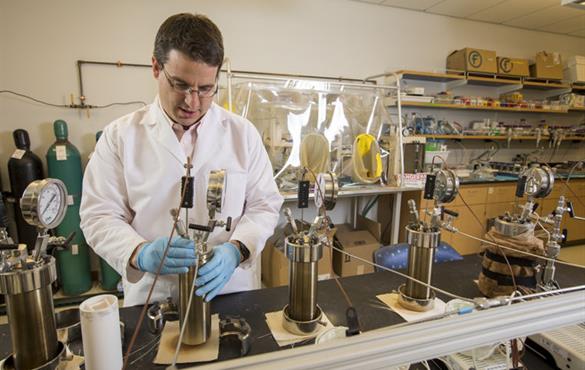WashU Expert: Climate Assessment makes clear the cost of inaction
Professor Giammar discusses three main ways to reduce the emission of carbon dioxide into the atmosphere

The many scientists behind the National Climate Assessment, released the day after Thanksgiving, have provided something of a price tag, says a Washington University in St. Louis expert on mitigation and sequestration.
“Thanks to this report, we can now weigh the cost of climate change versus the cost of mitigation,” said Daniel Giammar, the Walter E. Browne Professor of Environmental Engineering in the School of Engineering & Applied Science.
“We currently have three main ways to reduce the emission of carbon dioxide into the atmosphere,” Giammar said. “We can use more renewables, a shift we have been slowly making in the United States. We can transition from coal to natural gas, which helps,” he said, “though isn’t a long-term solution.
“Then there’s carbon capture and sequestration,” or capturing carbon and storing it in a way that keeps it from entering the atmosphere, where it would otherwise contribute to warming, he said.
Giammar noted that this approach has already been demonstrated at scale with projects that have sequestered more than one million tons of carbon dioxide underground, and this is an approach that his research group has studied.
“The technology has come a long way in the past 10 years,” he said. At the moment, the main barrier to implementation is economics, because it’s free to emit carbon dioxide.
“The report looks at the costs of doing nothing,” Giammar said. “The benefits of mitigation are now quantified. It’s a good guide for determining what we’re willing to pay.”
“Thanks to this report, we can now weigh the cost of climate change versus the cost of mitigation,” said Daniel Giammar, the Walter E. Browne Professor of Environmental Engineering in the School of Engineering & Applied Science.
“We currently have three main ways to reduce the emission of carbon dioxide into the atmosphere,” Giammar said. “We can use more renewables, a shift we have been slowly making in the United States. We can transition from coal to natural gas, which helps,” he said, “though isn’t a long-term solution.
“Then there’s carbon capture and sequestration,” or capturing carbon and storing it in a way that keeps it from entering the atmosphere, where it would otherwise contribute to warming, he said.
Giammar noted that this approach has already been demonstrated at scale with projects that have sequestered more than one million tons of carbon dioxide underground, and this is an approach that his research group has studied.
“The technology has come a long way in the past 10 years,” he said. At the moment, the main barrier to implementation is economics, because it’s free to emit carbon dioxide.
“The report looks at the costs of doing nothing,” Giammar said. “The benefits of mitigation are now quantified. It’s a good guide for determining what we’re willing to pay.”

